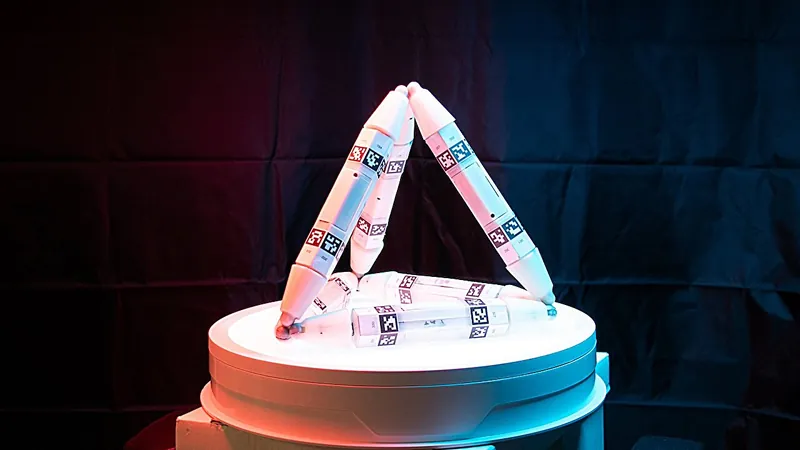
Revolutionary Robots That 'Grow' and 'Heal' Themselves: The Future of Autonomous Machines
2025-07-16
Author: Sarah
Imagine a world where robots can physically grow, repair themselves, and adapt like living organisms. Thanks to groundbreaking research from scientists at Columbia University, this vision is becoming a reality.
In an eye-opening study published in *Science Advances*, researchers introduced a concept known as "Robot Metabolism." This innovative process enables robots to absorb materials from their environment or even from each other, empowering them to self-repair and enhance their capabilities.
Lead researcher Philippe Martin Wyder emphasizes that true autonomy goes beyond just thinking. For robots to function independently, they also need to sustain themselves using resources just like biological entities do.
The Truss Link: A Game-Changing Robotic Module
The study showcased a revolutionary robotic module called the Truss Link, designed to mimic the popular Geomag toy. These simple bar-shaped devices feature magnetic connectors that allow them to transform from two-dimensional shapes into adaptive three-dimensional robots.
For instance, researchers demonstrated how one triangular-shaped robot could integrate an additional link, evolving into a more complex machine that increased its downhill speed by over 66.5%! This level of self-improvement demonstrates the vast potential of robots to modify themselves to execute specific tasks.
From Static to Dynamic: The Future of Robotics
Hod Lipson, a co-author of the study, pointed out the stark contrast between current robotic technology and biological organisms. While machine learning has drastically advanced robot intelligence, their physical forms remain largely unchanged and rigid.
Lipson emphasizes the importance of adaptability in biological bodies, noting that life can grow and heal using modular components. The goal is to replicate this trait in robots, allowing them to utilize parts from one another, thus fostering an ecosystem of self-sustaining machines.
Envisioning a Self-Sustaining Future
Researchers foresee a future where robots autonomously maintain themselves, adapting to new challenges and environments as they arise. By imitating nature's building process, the concept of Robot Metabolism could lead to highly resilient and capable machines.
Wyder describes this technology as creating a "digital interface to the physical world," suggesting that AI will not only advance in cognitive terms but physically as well. Initial applications are expected in critical fields like disaster recovery and space exploration, hinting at a world where AI constructs its own physical entities.
A Cautionary Note
However, Lipson warns of potential drawbacks. With the increasing reliance on robots for various aspects of life—like transportation, manufacturing, and even space missions—the ability of these machines to maintain themselves becomes crucial. As fascinating as these capabilities are, the prospect of self-replicating robots raises ethical concerns.
Ultimately, while we stand on the brink of a revolutionary leap in robotics, the necessity for machines to learn self-care cannot be overstated. The future of autonomous machines might just be one of self-repair and growth.





 Brasil (PT)
Brasil (PT)
 Canada (EN)
Canada (EN)
 Chile (ES)
Chile (ES)
 Česko (CS)
Česko (CS)
 대한민국 (KO)
대한민국 (KO)
 España (ES)
España (ES)
 France (FR)
France (FR)
 Hong Kong (EN)
Hong Kong (EN)
 Italia (IT)
Italia (IT)
 日本 (JA)
日本 (JA)
 Magyarország (HU)
Magyarország (HU)
 Norge (NO)
Norge (NO)
 Polska (PL)
Polska (PL)
 Schweiz (DE)
Schweiz (DE)
 Singapore (EN)
Singapore (EN)
 Sverige (SV)
Sverige (SV)
 Suomi (FI)
Suomi (FI)
 Türkiye (TR)
Türkiye (TR)
 الإمارات العربية المتحدة (AR)
الإمارات العربية المتحدة (AR)